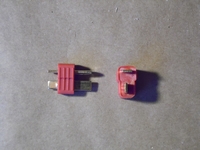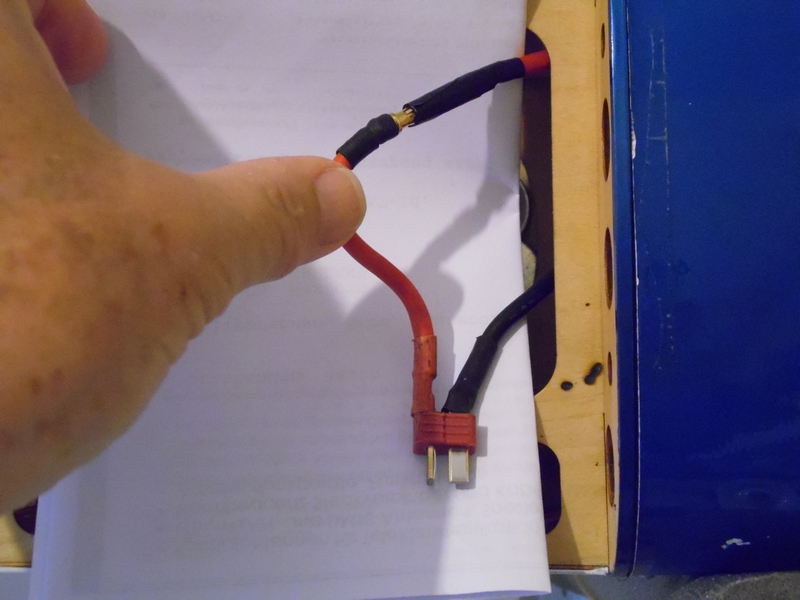I heard that putting a low value power resistor in series can help avoid sparking on these big lipos. Is it necessary?
Cheers
Dave.
Interesting point Dave.

Firstly let’s clear up a matter of ambiguity. When you refer to ‘T’ connectors I assume you mean these type of connectors.

These are actually called Deans connectors, I use them on all my Li-Po’s including my 6S packs. And yes, they can produce some quite substantial sparks, particularly when you’re trying to connect then together with cold “pingies“. I once received a rather painful burn (all-be-it from a very dramatic spark) whilst connecting my 6S pack.
The second aspect;……..
You may already know this Dave, coming from a technical background, (
The angle of incidence equals the angle of outsidence. :oops: Oopss sorry ,…
the angle of refraction.) but it would not be a good idea to leave anything in series with the circuit. It would reduce the circuit voltage and would likely get rather warm unless it’s of extremely low resistance in which case it won’t reduce the sparking anyway. ( anything that gets warm/hot wastes battery power. :evil: )
It occurs to me that you may have heard of temporarily using a
Thermistor, just while connecting the two parts of a connector together. However I couldn’t think of a way of arranging a temporary way of connecting a Thermristor when using my set up of Deans connectors. :!: So this is how I do it........

It’s a male Deans connector (The female part of the connector should be connected to the battery leads* )
On one of the leads coming from the Deans I’ve fitted a bullet connector (the positive lead in this case although it wouldn’t matter which lead was used) . I’ve fitted some heat shrink insulating covering around the female bullet connector. The insulation is slightly longer than the female connector. The reason being that the male connector has to go inside the insulating sleeve first, so any spark that may occur is shielded by the insulating sleeve. In other words it can't do any damage.
So the procedure is to first make sure that the bullet connectors are ‘open‘. Then, connect the battery Deans, and secondly connect the bullet connector. With practice, if I insert the two parts of the bullet connector quickly, there often isn’t a spark anyway.
There, that wasn’t too painfull was it? Hope it’s been of use.

L.K.
* Don’t try to shorten the battery leads from a Li-Po. Some of the multi core leads supplied have an insulating covering on each of the individual strands of the lead and render them extremely difficult to properly solder new connectors to. (Ask me how I know!)